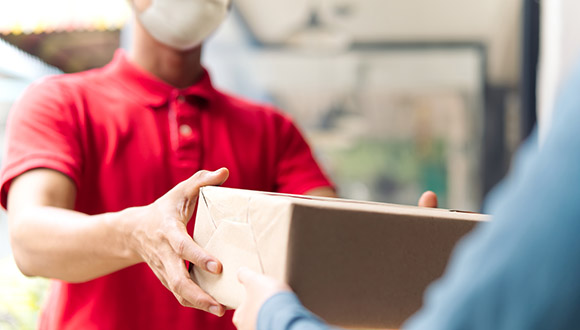How to overcome Last mile delivery hurdles
08/01/2021 00:00:00by Mark McKenna08/01/2021 00:00:00How to overcome Last mile delivery hurdlesBluedrop Services


The reliance on delivery throughout the pandemic has bought to light the inefficiency in last mile delivery systems. Delivery complaints have trebled in 2020 with many lost or damaged parcels or issues from delivering the wrong item.
Issues such as lost parcels and delays can result in added costs to businesses and ruin the reputation of your brand.
With demand so high and competition rife, falling behind on key service and last mile deliveries can’t just cost thousands, but it can cost future clients and the growth of your business too.
What is last mile delivery and why is it an issue
Last mile delivery is the last few steps of a product's journey to its delivery address. The last mile is the key to customer satisfaction and is also the most expensive and time-consuming part of the shipping process.
The final stretch of shipment typically involved multiple stops with low drop sizes. In residential and rural areas, a delivery point along one route can be several miles apart, with only one or two packages dropped off at each one. In cities, however, you have to tackle congestion and traffic to each delivery point, which causes delays to parcels being delivered.
What with COVID-19 and the increased demand for courier services, these delays are even longer. That’s not just because there’s more pressure on deliveries, but also because manufacturers are taking longer to dispatch items and there are delays of getting items off ports ready to start the last mile delivery process.
To maximise on profits, courier businesses need to look at ways to prevent loses through last mile delivery mistakes.
What you can do to overcome last mile delivery
Invest in technology
Investing in technology to streamline your processes, such as optimising scanners or packaging components to create a seamless delivery service. There are various systems and tools available to help not only improve your last mile delivery systems but also improve the service to your customers too.
Review time estimates
Make sure that your delivery time estimates are as accurate as they can be. If you experienced a particularly busy period over Christmas or January sales, to help keep the country moving during the pandemic, then make sure you are realistic with your delivery estimations. This not only makes it clear to those receiving the item, but it helps manage expectations too.
Renegotiate shipping arrangements
Check that the agreement you have in place with retailers is fair and accurate. If you have fees for late delivery or no timeline in place, you should find a way to negotiate to ensure that they can be held accountable for the occasions that the retailers fail.
Communication
Good communication between you, your customers and drivers will ensure that customers know when to expect their deliveries or if there are delays.
Engage with repeat customers who use your services regularly, whether that’s for posting parcels or for those that use you to receive parcels.
Make each delivery personalised and communicate any delays or allow them to have some say in where they would like to have their parcels left If they aren’t at home. Back up any requests with saved messages and take a picture of the parcel once you have left their parcel in a safe place as requested.
You can even let people track your whereabouts so they can estimate roughly what time you will arrive or if there are any delays.
Distribution centres
One of the main reasons why Amazon deliveries are so successful, and they can deliver quickly is because they have local distribution centres located in areas that are close to those who order the most. Choose to have depots in destinations that are close to cities, but not in the centre. Picking a location just outside the centre means you have easy access to rural and city areas.
Cover all areas
To mitigate the costs of things going wrong, you should also ensure you have the correct level of courier insurance in place. Having the right insurance cover can help you protect both your packages and your customers from loss, damage or theft. Having a relevant policy in place can help you save £100’s.
Final thoughts
With increase demand for courier services, businesses that offer deliveries are going to have to ensure they have the best processes and quality of service in place. The industry is expanding rapidly, and the coronavirus pandemic has only enhanced the growth.
Return to blog menuWant to find out more about Bluedrop's courier insurance?
Call our friendly team now for the right insurance cover - at the best price
+441489780491
Calls recorded for training and quality.



 Privacy and Cookie Policy
Privacy and Cookie Policy